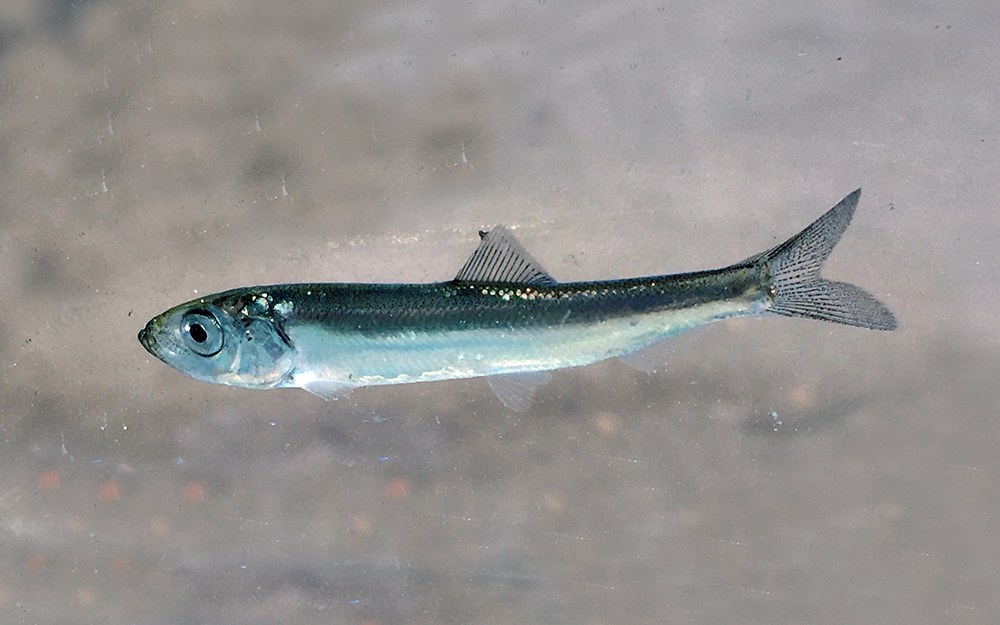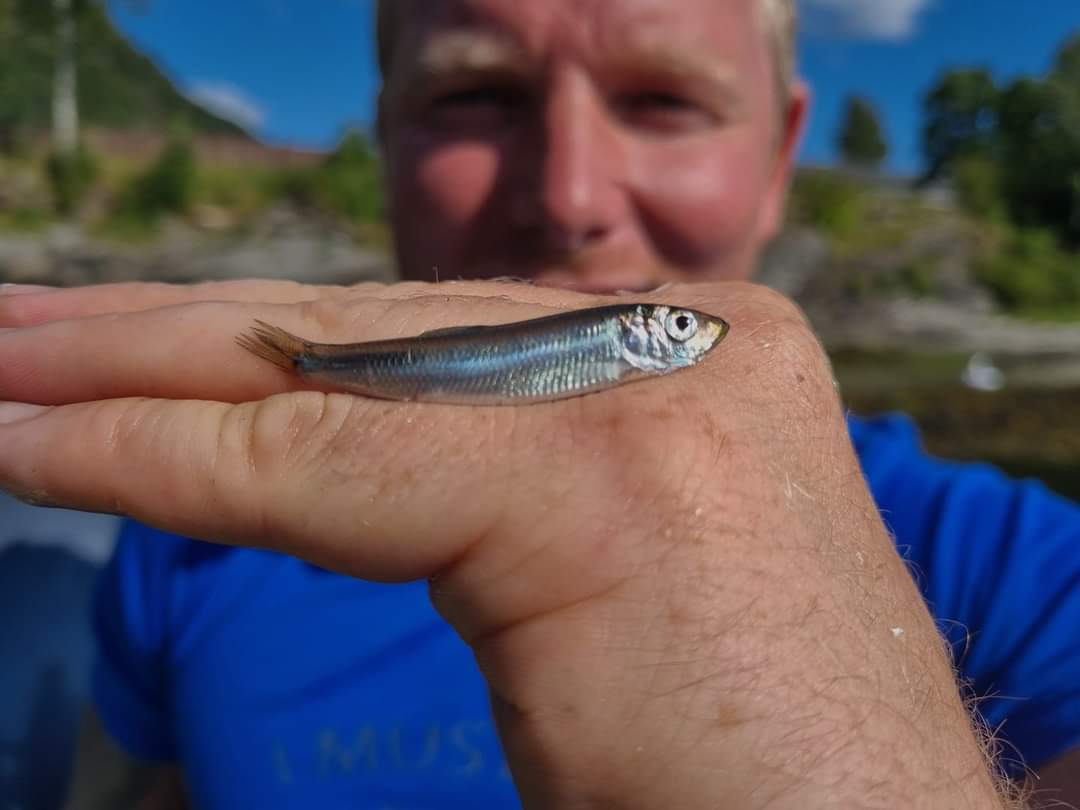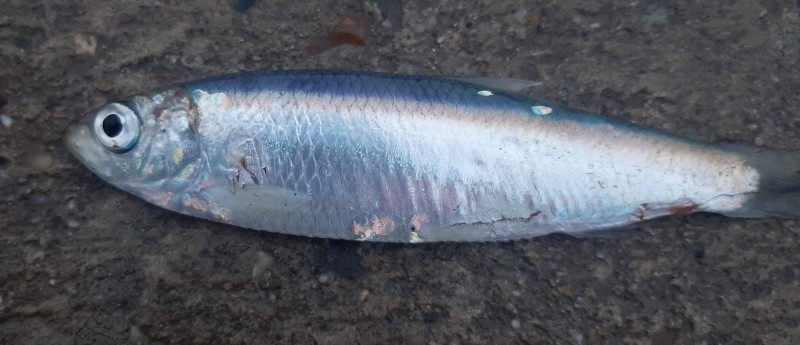European sprat
(Sprattus sprattus)

Classification
General data
The European sprat (Sprattus sprattus), also known as bristling, brisling, garvie, garvock, Russian sardine, russlet, skipper or whitebait, is a species of small marine fish in the herring family Clupeidae. Found in European waters, it has silver grey scales and white-grey flesh. Specific seas in which the species occurs include the Irish Sea, Black Sea, Baltic Sea and Sea of the Hebrides. The fish is the subject of fisheries, particularly in Scandinavia, and is made into fish meal, as well as being used for human consumption. When used for food it can be canned, salted, breaded, fried, boiled, grilled, baked, deep fried, marinated, broiled, and smoked.
Description
The European sprat is a small fish growing to a maximum length of 16 cm (6.3 in), but more often in the 8 to 12 cm (3 to 5 in) range. It is fairly elongate and somewhat laterally compressed, with a keel-like row of sharp scales along the belly. The lower jaw projects slightly, there are seldom any vomerine teeth on the roof of the mouth and the hind edge of the gill covers is smoothly rounded, without any fleshy protuberances. The dorsal fin has no spines and 13 to 21 soft rays while the anal fin has no spines and 12 to 23 soft rays. The origin of the pelvic fins, which have seven (occasionally eight) soft rays, are immediately below or in front of the origin of the dorsal fin. This fish has a bluish or greenish back and silvery flanks, with no dark spotting.
Distribution
The European sprat is native to the northeastern Atlantic Ocean. Its range includes the Baltic Sea, the North Sea, southern Norway and Sweden, round the coasts of the British Isles, the Iberian Peninsula, Morocco, the Mediterranean Sea, the Adriatic Sea and the Black Sea. It occurs both in open water well away from the coast and in bays and estuaries, being able to tolerate salinities as low as 4 parts per thousand. It is a schooling fish and migrates between its winter feeding grounds and its summer breeding grounds. It also makes vertical migrations, rising to near the surface at night to feed.













